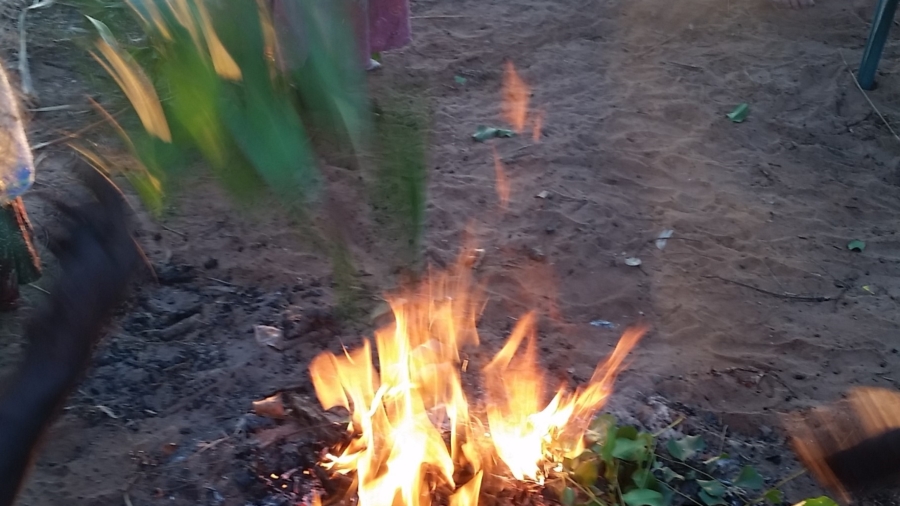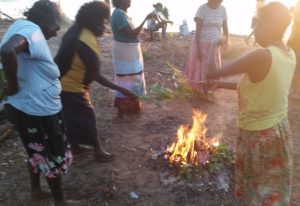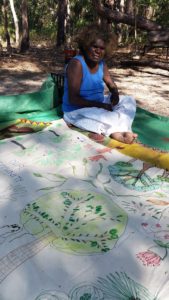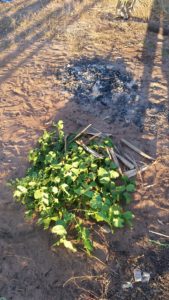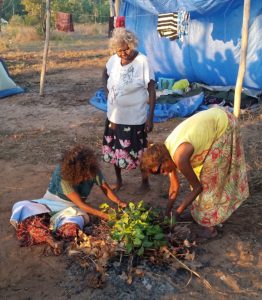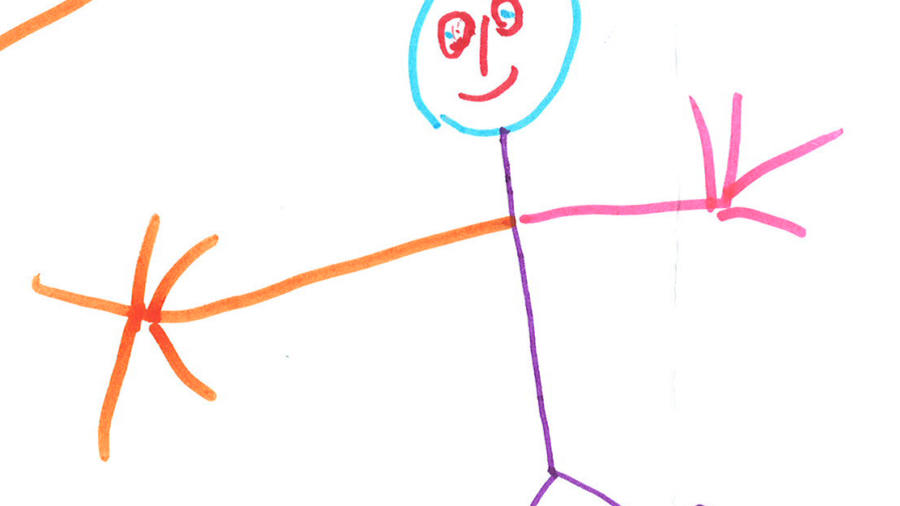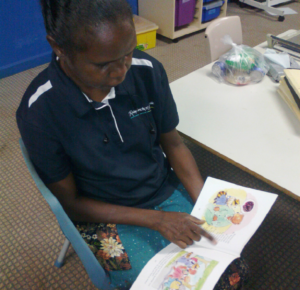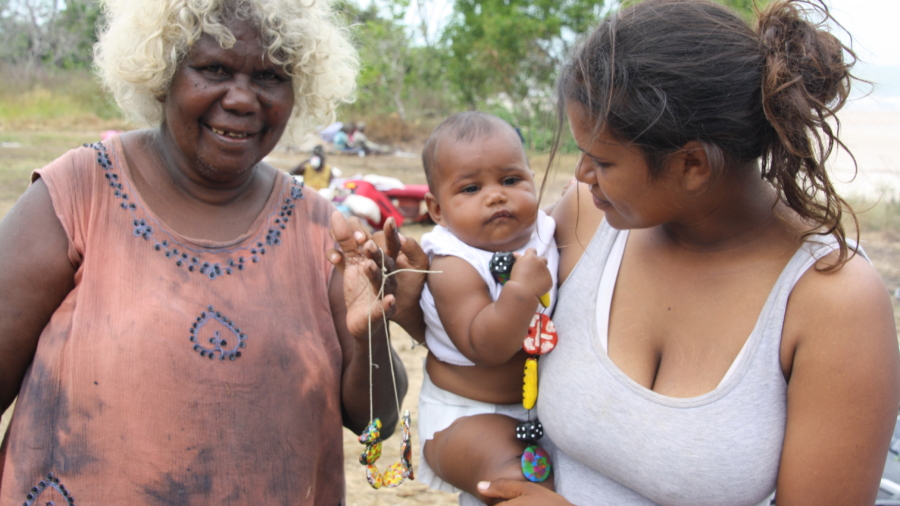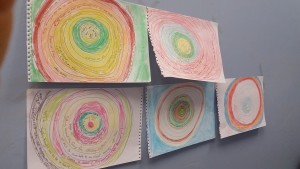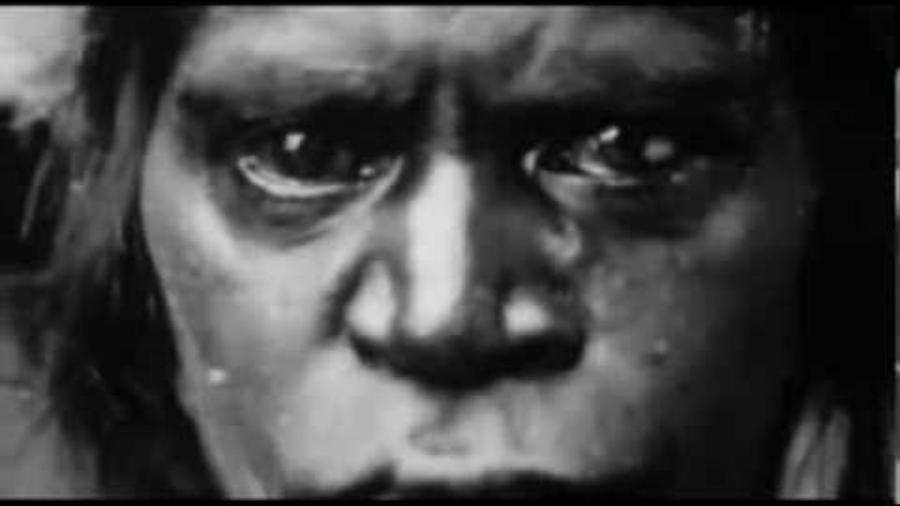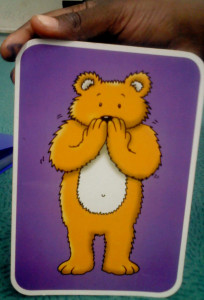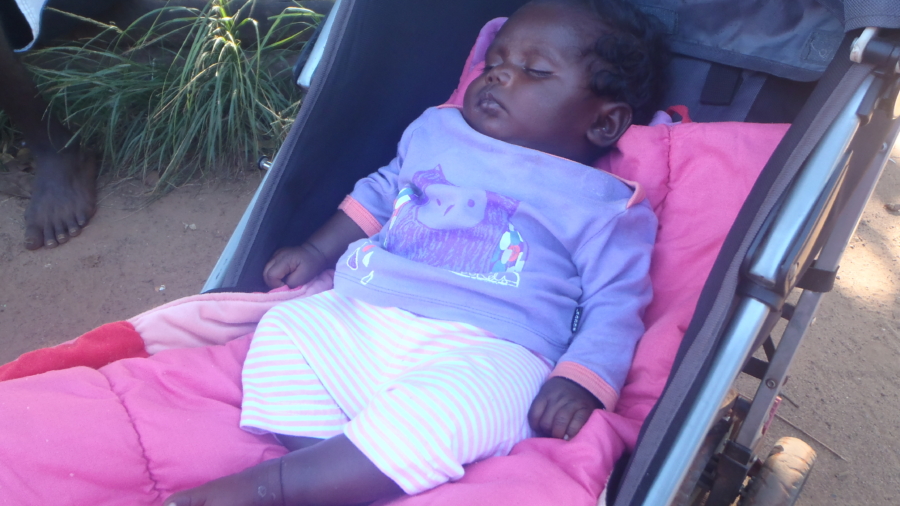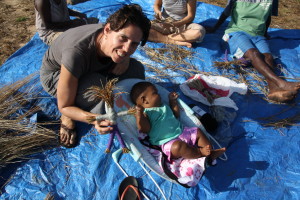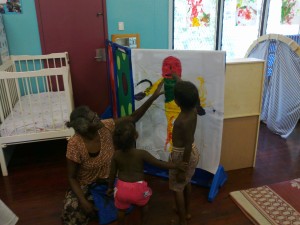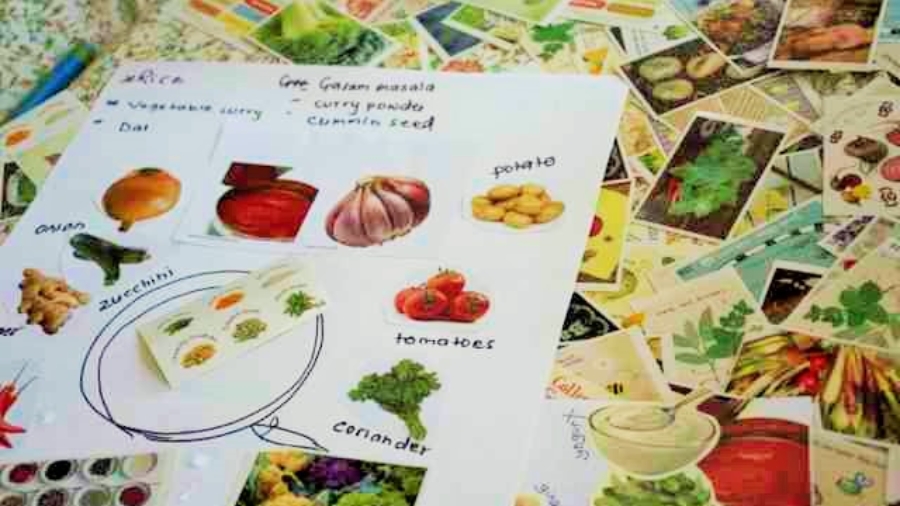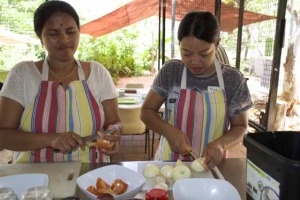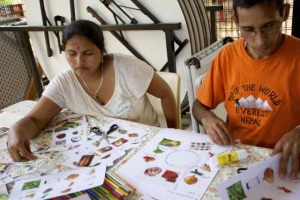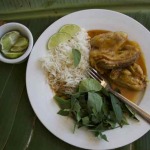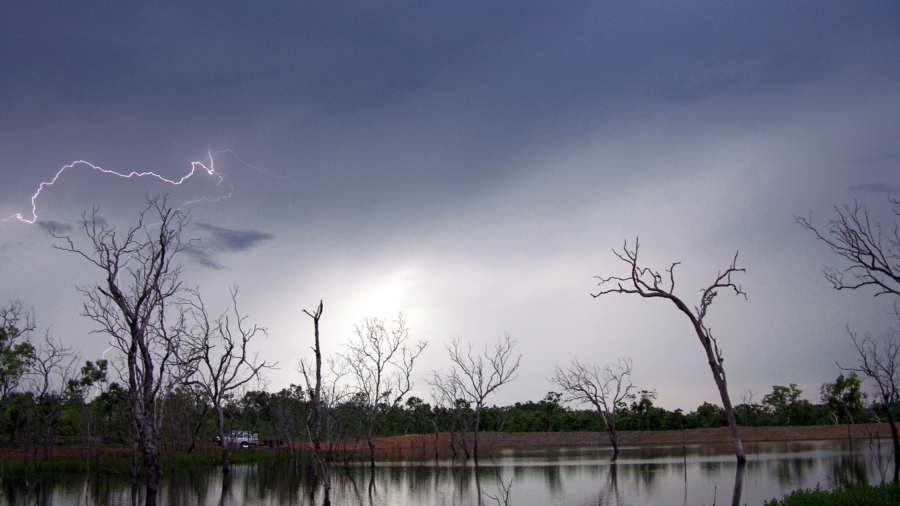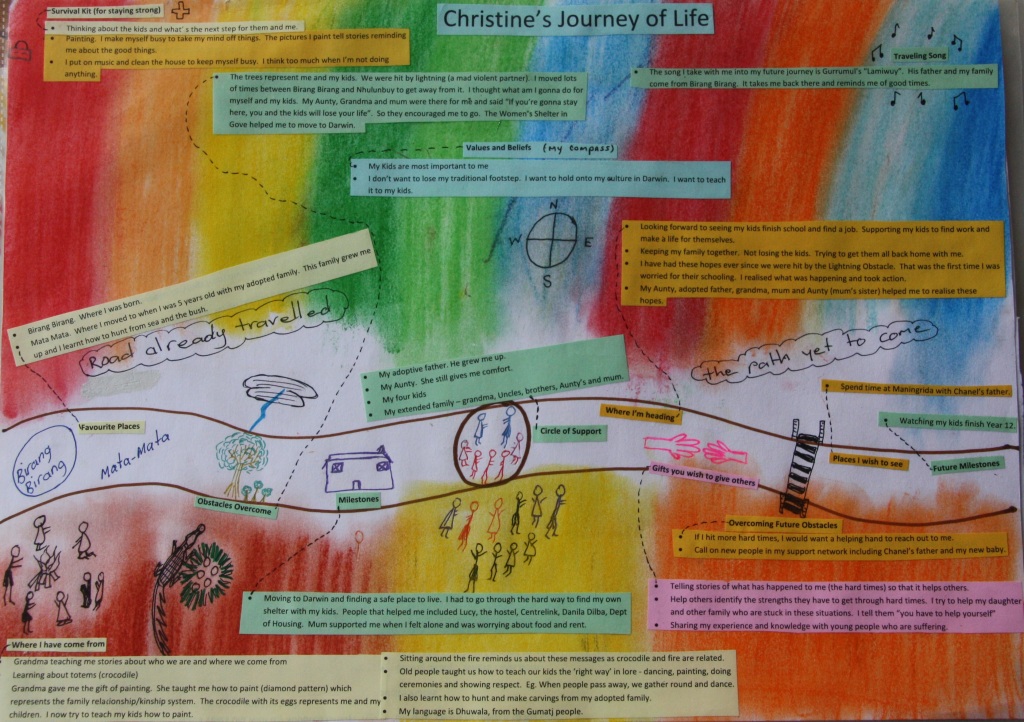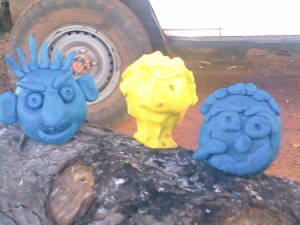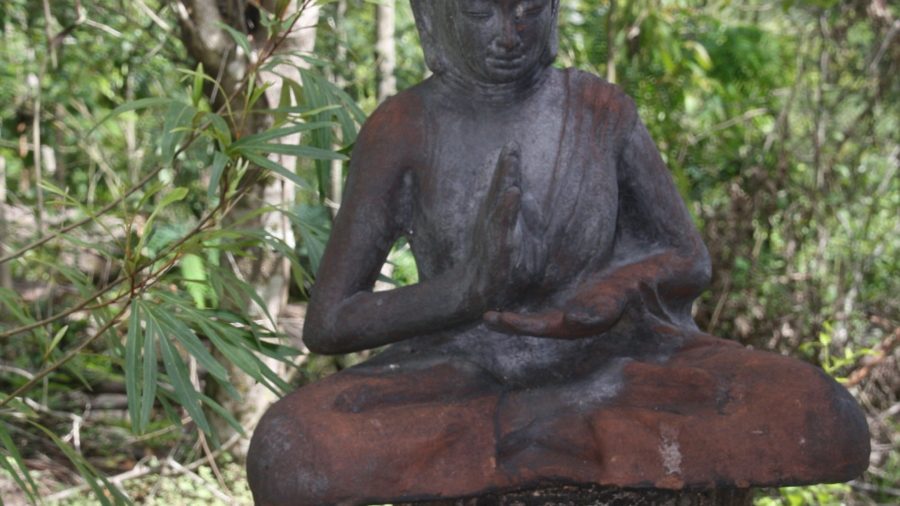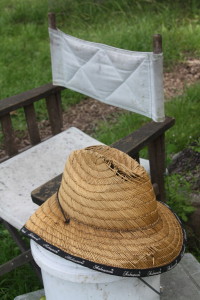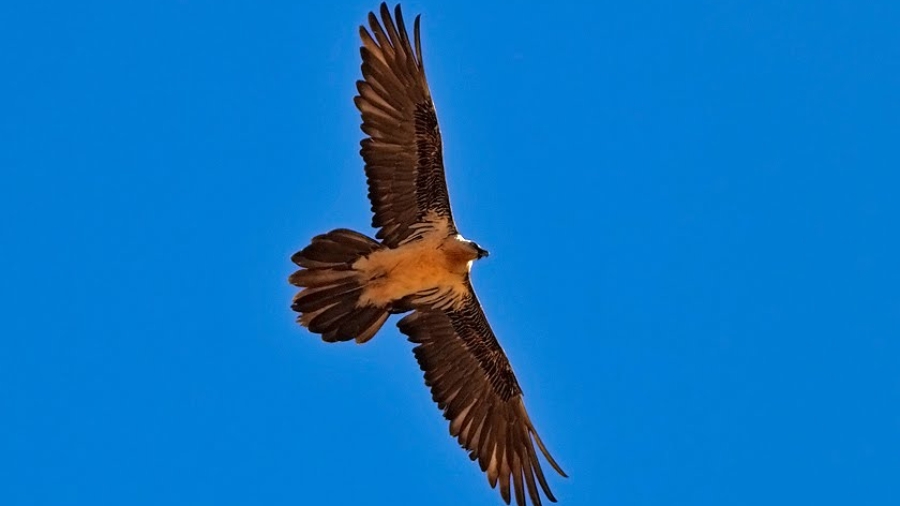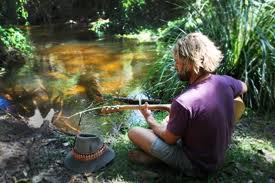The past month has been a very exciting one as the Healing Our Children (HOC) program starts to finally spread its message across the Tiwi Islands. For me, the program represents best culturally-safe, social work practice by combining scientific knowledge from the Western World with Aboriginal worldviews, cultural traditions and healing knowledge. Neither is prefaced as being superior to the other, with both adding value to the theme of prevention and healing from trauma. The resources we have developed represent four years of consultation with Elders about the best ways of engaging Aboriginal women in the communities we work.
The smoking ceremony is one traditional practice that is very important in Tiwi culture to promote healing. That is why a healing activity or ceremony has been built into the groupwork program. The smoking ceremony offers a space for mums and their children (if present) a place to heal and Elders to be empowered in leadership of this traditional practice.
On our first HOC bush camp, I had the opportunity to interview Molly Munkara, an Elder from Wurrumiyanga, to share insight into the spiritual significance of the smoking ceremony.
“Long time ago, Tiwi people used smoking ceremony as part of their ritual. Healing is part of our traditional culture. The smoking ceremony….it cleanses our mind…and heart.”
Molly says she was only 4 or 5 when she was taught about the smoking ceremony.
“We learnt that from our grandparents…our ancestors. They handed down that smoking ceremony to our parents. I was joining in, looking, participating in what they do.”
Molly shared the significance of the ceremony at sorry time.
“When a person passes away, it’s in-laws of the deceased person that prepares the smoking ceremony and the Elders too. We have a meeting, discussion first. And they talk to the families about it, when it is going to happen…
They send a message around the smoking ceremony is happening on that particular day. And they gather round. Families or anybody who have connected to that person’s life [can participate].”
On this night, I witnessed a smoking ceremony with a different purpose – healing of the self in mind, body and spirit. The Elders began by calling out to the spirit ancestors for keeping us safe, instructions for the children on what to do, a song and prayer from the Catholic tradition. After the leaves of the bloodwood tree were set alight, crackling under the heat, Elders used small bunches bathed in smoke to swipe the shoulders and head of those being blessed.
“We’re going to gather around the smoking ceremony to heal our spirit… purify our minds and cleanse our bad spirit away. Bring the good spirit inside us.”
“A couple of ladies will do the smoking, they build up the fire and put their leaves in the drum, and then when they are ready, they will call. We will walk through the smoke.”
I wondered allowed whether Molly had any particular thoughts in her mind during the ceremony.
“We think about things that are not right in our lives. And we’ll throw that away with the smoke. And then we think about new life after that, new beginnings. What are we going to do that’s really good for us and our lives. We do get some [messages] from elders, what they want us to do. Like get a better life. Try not to fall into that same bad cycle, that goes around. Try to get out of it. And then start to form a new life, good life. So we can be happy and in good health. Feeling great about myself. We really need to love ourselves too. And treat ourselves with respect.”
Molly reflected on how the smoking ceremony has been healing for her own life.
“The smoking ceremony has helped me a lot in my mind and heart, physically and emotionally. [Physically], it helps you, in what you do [not with illness or disease]. Like going out with family, spending time with them, going out hunting with the Elders, gathering, singing and joining in any other activities.”
It’s an honour and privilege to be invited onto traditional country to not only allow us to run our program but also be invited to participate in traditional healing practices such as the smoking ceremony.
For anyone practising social work in Indigenous communities, I encourage you to think about the sort of traditional knowledge and practices that can be respectfully acknowledged and built into your program. Too often I hear about cultural practices that are dying out or lost forever. Many of these offer opportunities for Aboriginal people to help themselves.
Our work should be about healing too, not just therapy.

